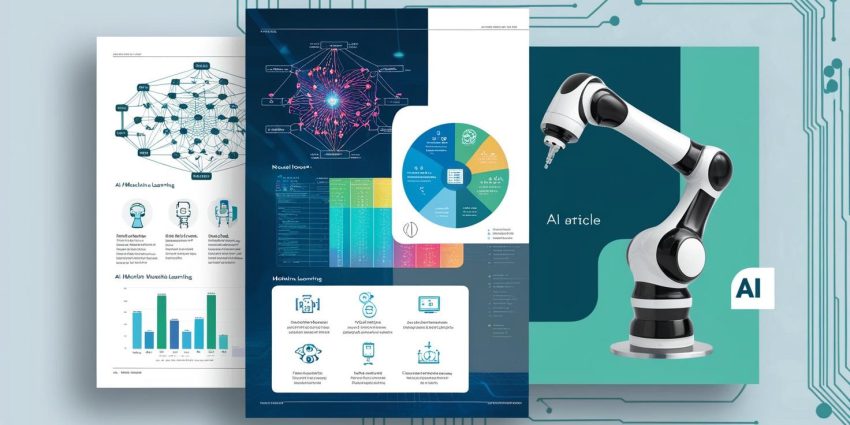Artificial Intelligence (AI) has become a cornerstone of modern business strategy, offering unprecedented opportunities for innovation and efficiency. As AI continues to advance, it’s crucial for professionals to stay informed about the various methodologies that drive AI development and deployment across different industries.
In this article, we will provide a comprehensive overview of the key AI methodologies that are currently in use, from the foundational techniques of machine learning to the latest advancements in generative and adaptive models. We’ll cover the spectrum of AI, including natural language processing, computer vision, predictive analytics, and neural networks, as well as delve into the emerging fields of explainable AI, federated learning, and edge AI.
Each section of this article will focus on a specific AI methodology, offering a clear description and sample business use case. Our aim is to present these methodologies in a manner that is both accessible and informative, providing awareness for decision-makers, practitioners, and anyone interested in the practical applications of AI.
AI in combination with a human were used to write this article. It’s purpose is to define a universe of AI methodologies for reference and consideration.
1. Machine Learning (ML)
Supervised Learning
Description: Training models on labeled data for predictions or classifications.
Use Case: AWS SageMaker for predicting customer churn in banking.
Unsupervised Learning
Description: Finding patterns in unlabeled data for grouping or anomaly detection.
Use Case: Google Cloud’s AI Platform for customer segmentation in retail.
Reinforcement Learning
Description: Learning to make decisions to maximize a reward in an environment.
Use Case: Microsoft Azure’s Personalizer for real-time product recommendations in e-commerce.
Transfer Learning
Description: Applying knowledge from one trained model to a different but related task.
Use Case: BERT fine-tuning for specialized document classification in legal firms.
Self-Supervised Learning
Description: Training models to predict parts of their input from other parts without explicit labels.
Use Case: Meta’s self-supervised learning for content understanding in social media.
Few-Shot/Zero-Shot Learning
Description: Models that can perform tasks with few or no examples.
Use Case: OpenAI’s GPT models for specialized content creation with minimal examples.
Ensemble Methods
Description: Combining multiple models to improve performance.
Use Case: Random Forests on Azure for credit risk assessment in banking.
2. Natural Language Processing (NLP)
Text Analysis
Description: Analyzing text data to extract insights.
Use Case: IBM Watson for sentiment analysis in media.
Machine Translation
Description: Automatic translation of text between languages.
Use Case: Google Translate API for real-time translation services in global corporations.
Chatbots
Description: AI-powered conversational interfaces for customer service.
Use Case: Amazon Lex for automated customer inquiries in telecom.
3. Computer Vision
Image Recognition
Description: Recognizing objects and patterns in visual data.
Use Case: Azure Computer Vision for facial recognition in security.
Video Analysis
Description: Analyzing video data for pattern and event identification.
Use Case: Google Video AI for customer behavior analysis in retail.
4. Predictive Analytics
Data Analysis
Description: Using historical data to predict future outcomes.
Use Case: IBM SPSS Modeler for flight demand forecasting in airlines.
Decision Support
Description: Providing insights for decision-making.
Use Case: Microsoft Azure for clinical decision support in healthcare.
5. Neural Networks
Deep Learning
Description: Networks with multiple layers for recognizing complex patterns, mimicking the human brain.
Use Case: Deep Learning on AWS for fraud detection in finance.
Graph Neural Networks (GNNs)
Description: Neural networks that operate on graph-structured data.
Use Case: Pinterest’s recommendation system for related content discovery.
6. Generative AI (GenAI)
Description: AI that generates new, similar data based on its training.
Use Case: OpenAI’s GPT-3 for ad copy generation in marketing.
7. Retrieval-Augmented Generation (RAG)
Description: Combining language models with external knowledge retrieval.
Use Case: RAG on Google Cloud’s AI Platform for legal brief generation in legal research.
8. Advanced AI Approaches
Explainable AI (XAI)
Description: Making AI models’ decisions understandable and transparent to humans.
Use Case: DARPA’s XAI program for explaining medical diagnosis recommendations in healthcare.
Federated Learning
Description: Training models across multiple devices/servers while keeping data localized.
Use Case: Google’s federated learning for keyboard prediction in mobile devices without sharing user data.
Edge AI
Description: AI processing on edge devices rather than in the cloud.
Use Case: TinyML on IoT devices for real-time quality control in manufacturing.
Neuro-Symbolic AI
Description: Combining neural networks with symbolic reasoning.
Use Case: IBM’s neuro-symbolic models for complex problem-solving in logistics.
Causal AI
Description: AI that understands cause-effect relationships rather than just correlations.
Use Case: Microsoft’s causal inference frameworks for impact assessment in marketing.
Adaptive AI
Description: AI that learns and adapts to changing environments.
Use Case: NVIDIA’s adaptive AI for self-driving car development in automotive.
Multimodal AI
Description: Processing multiple data types like images, text, audio, and video.
Use Case: Facebook AI for content moderation in social media.
Model and Detect
Description: Building models for tasks like spam detection or facial recognition.
Use Case: TensorFlow for spam detection in email services.
9. Implementation Considerations
Cloud vs. On-Premise Deployment
Description: Choosing between cloud services and local infrastructure for AI implementation.
Model Optimization
Description: Tuning models for efficiency, accuracy, and deployment constraints.
MLOps
Description: Practices for deploying and maintaining machine learning models in production.
Ethical AI
Description: Ensuring fairness, privacy, security, and responsible use of AI technologies.
Integration Strategies
Description: Methods for incorporating AI solutions into existing business systems and workflows.

